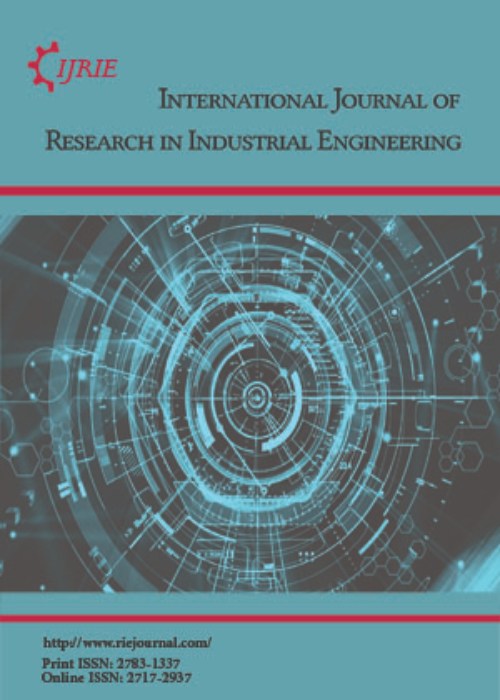فهرست مطالب
International Journal of Research in Industrial Engineering
Volume:2 Issue: 1, Winter 2013
- تاریخ انتشار: 1391/11/13
- تعداد عناوین: 5
-
Pages 1-11Many organizations are facing competitive challenges due to the rapid pace of technological change. Management theorists and practitioners alike have called for more creativity and innovation in product lines, management practices and production processes. On one hand, Total quality management (TQM) has long been a major management practice. Recognition of TQM as a competitive advantage is widespread around the world, and few companies can afford to ignore TQM. Therefore the purpose of this paper is to identify and extraction TQM & Innovation dimensions. In first part have been recognized four dimensions for TQM and two dimensions of Innovation, The four TQM dimensions in this study include Leadership, Employee relations, Customer focus , Continuous improvement and the two Innovation dimensions are Product innovation and Process innovation. Also, in this paper used a DEMATEL Method to examining the causal relations these factors. Inattention to results, the most influential factor is Leadership and more affected factor is Process innovation. As a result Leadership has more influence on Innovation.Keywords: Total Quality Management, Innovation, DEMATEL method
-
Pages 12-19Estimating duration of projects manual tasks is one of the crucial concepts and problems of their management and control. Methods have been used to achieve this estimation are so difficult, time consumer and basically unreliable. In this paper a new method is introduced based on modular arrangement of predetermined time standards (MODAPTS) plus method which is the well-known method of work measurement. The method is reliable according to reliability of the MODAPTS method. The method is so easy to use, so quick in application, has rapid derivation of objective standards and its analysis are regarding people and their capacities. Finally, an applicability of the method is illustrated by some general manual sample civil works and the results are shown at the end of the paper.Keywords: project management, MODAPTS, Task duration estimation
-
Pages 20-29Considering flow shop scheduling problem with more objectives, will help to make it more practical. For this purpose, we have intended both the makespan and total due date cost simultaneously. Total due date cost is included the sum of earliness and tardiness cost. In order to solve this problem, a genetic algorithm is developed. In this GA algorithm, to further explore in solution space a Tabu Search algorithm is used. Also in selecting the new population, is used the concept of elitism to increase the chance of choosing the best sequence. To evaluate the performance of this algorithm and performing the experiments, it is coded in VBA. Experiments results and comparison with GA is indicated the high potential of this algorithm in solving the multi-objective problems.Keywords: Due Date, Flow shop scheduling problem, Genetic algorithm, makespan, multi-objective, Tabu Search
-
Pages 30-44
It is important to segment the most profitable customers of a company. Many CRM researchers have been performed to calculate customer profitability and develop a comprehensive model of it. This paper with the aid of data mining tools tries to customer segmentation based on kind of RFM. Customers are clustered using K-means and finally calculated CLV. This approach is essential for an SME to be able to provide a personalized service to each customer and to reach customer satisfaction.
Keywords: Customer Relationship Management, Customer Lifetime Value, Data mining, RFM, SMEs -
Pages 45-62
This paper investigates the problem of designing an integrated production-distribution system which supports strategic and tactical decision levels in supply chain management. This overall optimization is achieved using mathematical programming for modeling the supply chain functions such as location, production, and distribution functions. Our model intends to minimize the total cost including production, location, transportation, and inventory holding costs. In view of the NP-hard nature of the problem, this paper provides a hybrid algorithm incorporates Genetic Algorithm into Lagrangian Relaxation method (namely HLRGA) to update the lagrangian multipliers and improve the performance of LR method. The effectiveness of HLRGA has been investigated by comparing its results with those obtained by CPLEX, hybrid genetic algorithm, and simulated annealing on a set of supply chain network problems with different sizes. Finally, an industrial case demonstrates the feasibility of applying the proposed model and algorithm to the real-world problem in a supply chain network.
Keywords: Supply chain network, Facility location, Lagrangian Relaxation, Genetic algorithm


